Good Afternoon everyone for all of our friends who are at Blurtter and have been joining Blurtter for a long time, hopefully we are always healthy and can always carry out activities as usual. So on this occasion I want to write a little bit about Shellless Snail | Photography | Macro hopefully later it can become a memory for myself, and for other friends who are already married, don't forget to also give directions and input if later in my writing there are still words- words that are not polite, therefore I apologize once again.
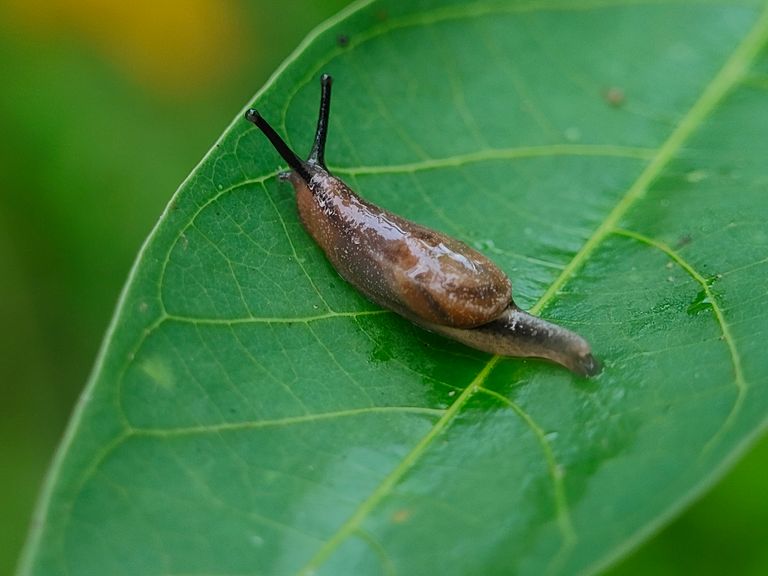
Snail is the general name given to members of the class Gastropod molluscs or belly-legged animals. In a narrow sense, "snails" are gastropods that have coiled shells in the adult stage. In a broad sense, which is also the meaning of "Gastropod", includes snails and naked snails (snails without shells, known in Javanese as resrespo). Class Gastropods ranks second in terms of the number of member species after Insecta (insects). Habitat, shape, behavior, and anatomy of the snail also varies greatly among its members. Snails can be found in a variety of different environments: from trenches to deserts, to even the deepest seas. Most species of snails are marine animals. Many also live on land, fresh water, and even brackish water. Most snails are herbivores, although some species that live on land and sea can be omnivores or predatory carnivores. Some examples of gastropods are snails (Achatina fulica), garden snails (Helix sp.), sea snails (Littorina sp.) and freshwater snails (Limnaea sp.)

Slug is a snail without a shell or some of them have a small internal shell belonging to the Mollusca phylum, class Gastropods. These animals live nocturnally and hermaphrodites and have a fairly complicated mating system. Slugs without shells mate with other individuals to reproduce, but if environmental conditions are unfavorable some can self-fertilize and produce viable offspring. Deroceras laeve often self-fertilizes when the animal is far from the colony (when isolated). Morphologically, shellless snails have a pneumostome that can reduce water output by opening the respiratory opening, 2 pairs of antennae consisting of ocular tentacles and peduncular tentacles that have sensory functions, and besides that, the slug produces mucus that functions as movement, attachment, reproduction and protection from predatory attack, this slime is often called a "slime trail" which can be used as an indication of the presence of this animal.

Snail eggs are round, transparent or white and can be found in holes in the ground, under litter, under wood or under rocks. When the eggs hatch, juveniles have a body morphology that is similar to adults, one of the developments is an increase in size and a change in color patterns as they mature. Snails like cold, dark, and humid areas, one example of shellless snails that are often found in the West Java region are Filicaulis bleekeri and Meghimatium while the internal shell snail is Deroceras. Filicaulis bleekeri has no shell, the body is dark in color, there is a midline that is lighter in color than the body. This slug is easy to find around the house in the morning after it rains, and more often at night in humid areas. Filicaulis bleekeri is often confused with leeches. Leeches have a morphology that looks the same but very different, leeches belong to the phylum Annelida which can absorb blood from the host's body, while Filicaulis bleekeri eat plants.

Another shellless snail is Meghimatium which has a brownish purple color, has 3 to 5 stripes on its body which are brown or black, besides that the back of this snail is yellowish white. In contrast to the two snails, Deoceras has a small shell inside its body (internal). Deroceras laeve has a small body, the length can reach 25 mm. Brown, black, or gray. This snail has a small shell that is covered by a mantle. One of the roles of snails without shells is as pests of agricultural crops (such as tomatoes, cabbage, mustard greens or carrots), but there are some people who consider snails and slugs as pets by keeping them in a terrarium. Several ways can be done to combat pests without using chemicals, namely by controlling pests when they are eggs and when they are still juvenile.
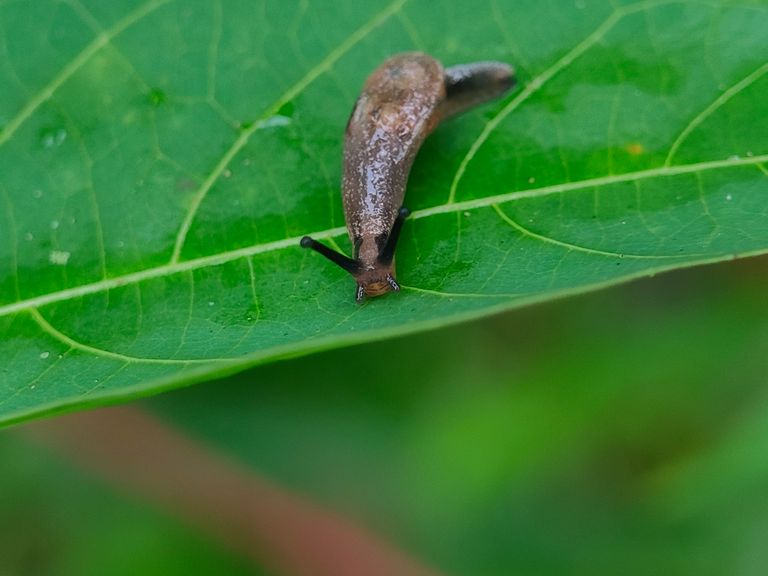
This small animal is often compared to a leech because of its slimy body, but this is a Slug or Slug without a shell (Filicaulis bleekeri) which is an exotic species native to the tropics. This slug seems to be often found on farmland, or in the yard of the house at night. This beautiful moving shell without a shell is often also called tropical leatherleaf aka Leaf Skin Snail. Maybe you often meet him in the yard or yard, sometimes mistakenly referred to as a leech. These nocturnal animals mate with other individuals to reproduce, but if environmental conditions are unfavorable some can self-fertilize and produce viable offspring. Often equated with leeches, these plant-eating animals have characteristics, do not have a shell, a dark body, there is a center line that is lighter in color than the body. Slug is easy to find around the house in the morning after it rains, and more often at night in humid areas. It acts as a pest of agricultural crops. Some people say that these animals can cause foot blisters if stepped on, but that claim has not been supported by research by experts.
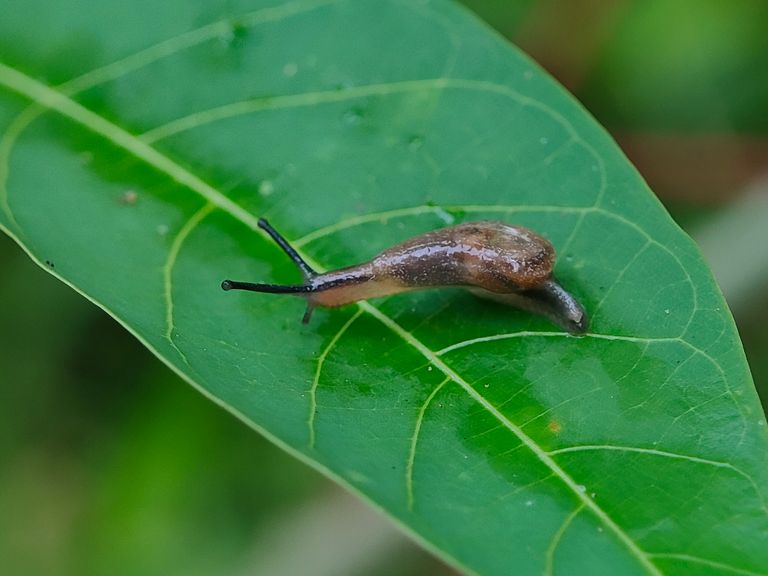
This animal looks like a leech, but it's not. He usually hides behind the bottom of plant pots or in between damp leaf litter. This is the joy of science lessons for grade 2 students at SD Semut-Semut the Natural School, namely the Nirvana, Namalatu, and Nihiwata classes, while exploring – recognizing and observing- these tiny animals called shellless snails or naked snails. Grade 2 students The Ants can't wait to get to know and find out. So, the 6 Ariolimax or these shellless snails immediately moved from the storage jar to their tiny palms. Oh yes, these snails were collected from the school garden. Instantly the atmosphere was filled with screams of various expressions, showing a high curiosity to recognize Ariolimax's nature. Some laugh because they find it funny, some exclaim loudly because of amusement… Wow. The others rushed impatiently for their turn.
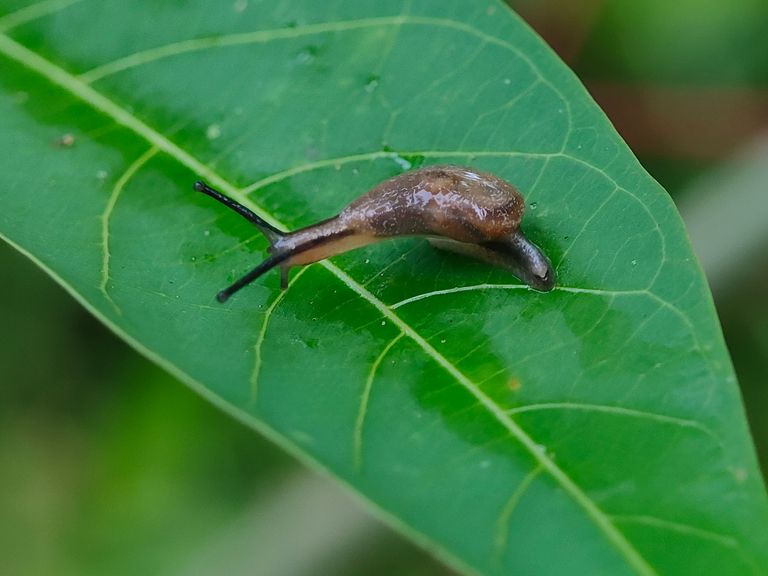
Her soft and moist body clung to her hand. “It was tingly and cold. Like jelly,” said one student. Students try to turn this snail so that it is face down with its back down. While chuckling, they watched the snail's body slowly turn its body using the abdominal muscles which also became its legs. "He can turn around!" there was an enthusiastic scream. Children learn to identify through morphological observations, most still think this is a leech, which lives usually in water and likes to stick to our bodies while sucking blood. In fact, these naked or shellless snails are not blood suckers, and are not dangerous. Even though it is small and looks weak, it turns out that this snail always moves without being tired, even though it has no legs or limbs. An advice for students, in life we must work hard and never give up.
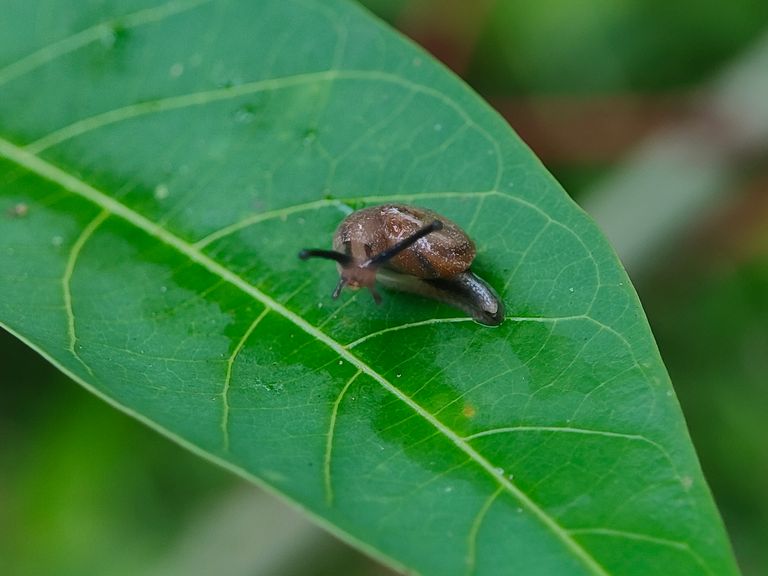
Shellless snails are also found in the sea. Its name is Nudibranch, and it can be found in Indonesian marine waters. How great is Allah SWT, God Almighty with the uniqueness of each of his creations. This animal belongs to the class Gastropods (gastro = stomach / stomach; pod = legs). Namely, a kind of snail. But uniquely he does not have a shell. So it walks to and fro with its feet, much like a leech. We often mistake them for leeches. This family Arionidae likes to live in humid places, like its sibling from the type of snail. His favorite food is fresh leaves, and contains water. He also likes to eat vegetables and sometimes eats leftovers from the kitchen. Has a body shape that is supple and moist, brown or blackish, there is a white line on the back. In the prone position, you can turn your body using the muscles in your stomach. Can pass through sharp objects (knives) without getting hurt and secrete mucus to protect his body.
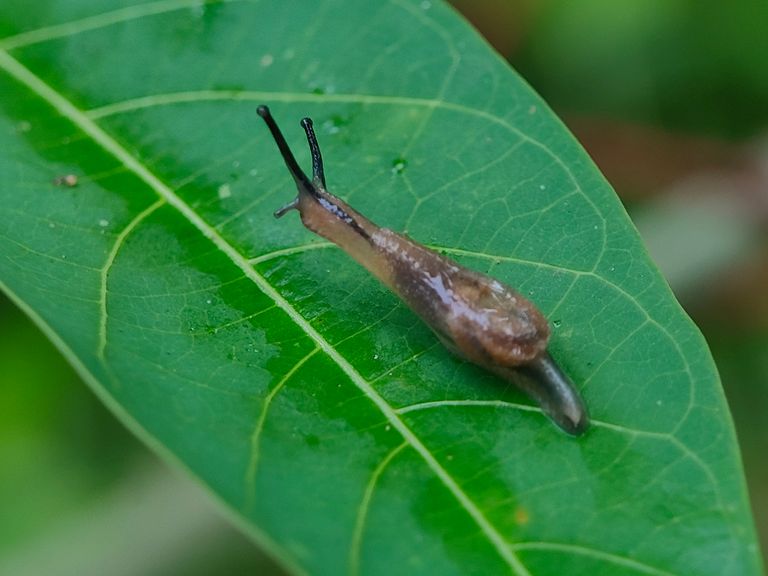
To recognize the state of the environment, naked snails secrete tentacles that are used for the sense of light (light-dark) and the sense of smell. Observe the habitat of naked snails (without shells) in a moist, covered area such as under potted plants or under wet litter. To note, usually at night these animals go out looking for food, and during the day hide in dark and damp/cold places. The children try to find the animal and pick it up carefully. Then, it is placed into a specimen jar. Take the snail from the jar, and observe the snail's movements. Take turns, students hold it. Students are asked to tell what they feel. After the activity, students wash their hands with soap and running water. All the life abilities of these shellless snails were observed with curiosity and enthusiasm by the students of the Natural School's Ants class. This is an example of a science learning activity at the Ants, with the theme getting to know the animals in our environment. Introducing various materials through exploration, observation, association, and expression, as a learning model at the Ant-Semut school.
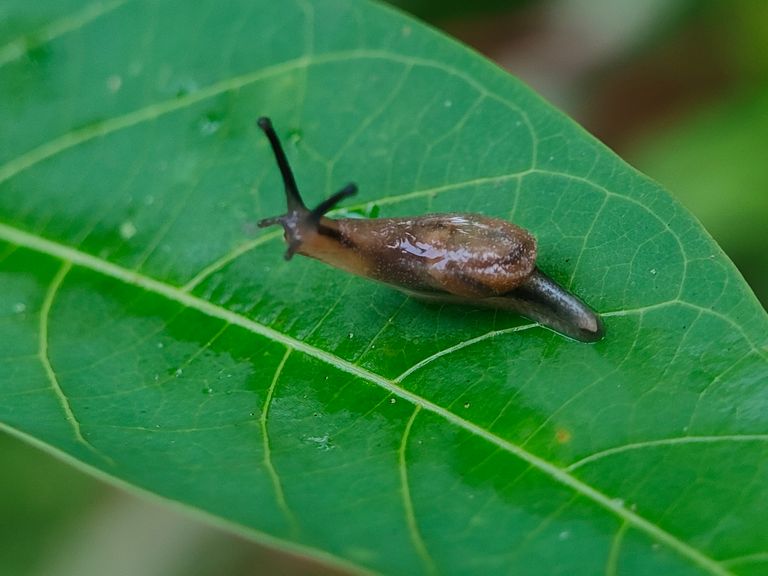
There are several types of snails that have been identified. Among them are the types of Elaphroconcha patens, Helicarion perfragilis and Amphidromus perpersus. These three types of snails are easily found in the TNGC area, with habitats in litter and humid places. For the type of Amphidromus parpersus, the mucus can be used to treat wounds. The forest conch is a small slimy animal that has a shell attached to the back of its body and walks very slowly in the forest. But it turns out that these animals have an important role in nature. Conch is one type of fauna in the phylum Mollusca which is included in the class Gastropods. Mollusca is a group of animals whose bodies are soft and generally live in water. Most molluscs still live in the sea, but some types of snails and snails have evolved to live on land.
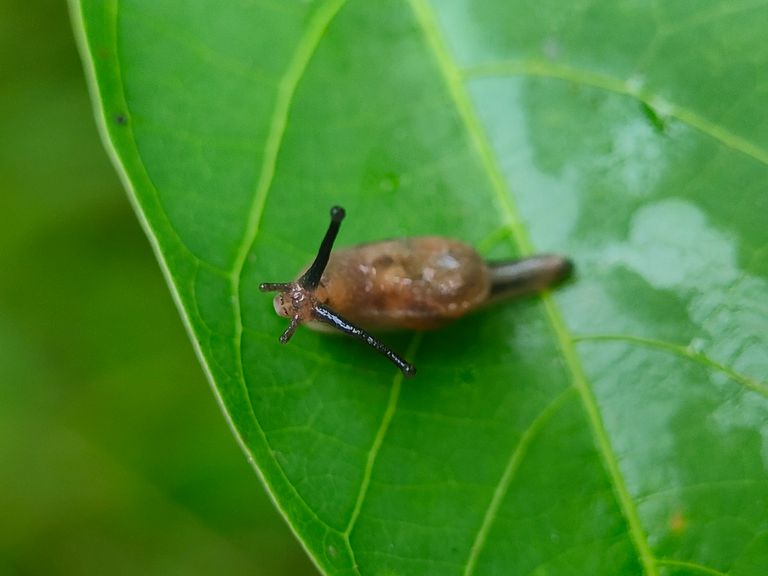
These animals have an important role in interactions in the ecosystem. It also has a role to maintain the soil ecosystem. Its role in maintaining the soil ecosystem is because these animals eat leaves. Which in the end will donate organic matter digestion results to the soil surface. So that other organisms such as worms and microorganisms (simple living things formed from one or several cells and can only be seen with a microscope) other soil can take advantage of it. In addition, because the body contains water and microorganisms. Then it will automatically help the spread of microorganisms along the trajectory where it runs. That includes a brief explanation of the snail and its role in nature. This can give us an idea that all living things have their respective roles in nature. Let's love and take care of this nature, then nature will provide more than we need
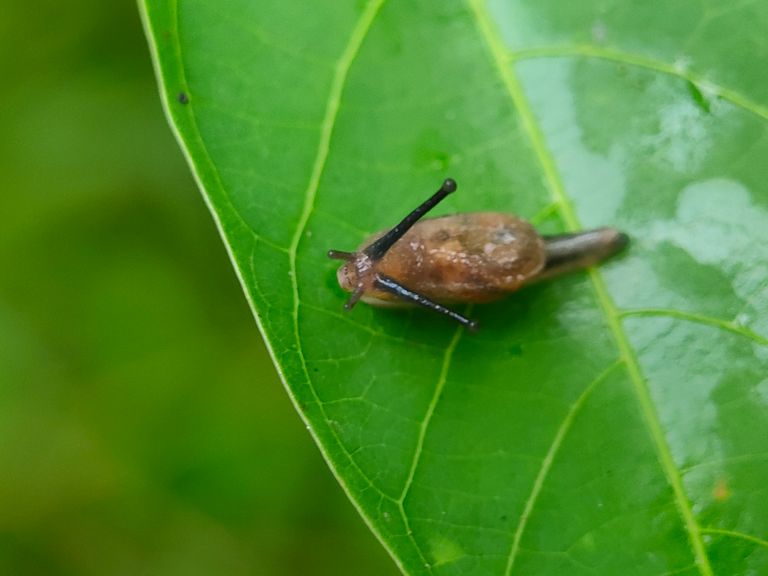
Snails include land snails that generally have a habit of living in humid places and are active at night (nocturnal). The nocturnal nature of the snail is not solely determined by the dark factor at night but is determined by the temperature and humidity factor of the environment. In the afternoon after the rain, many found snails roaming everywhere. Caption: A. Adult Achatina snail (giant East African snail, Achatina fulica). B. Achatina snail eggs (giant East African snail, Achatina fulica). The damage caused by the snail attack is quite large. Young roots, new shoots and flower buds are the most delicious food for these snails. The moon orchid is the orchid plant that is most often attacked by this snail. Usually launches attacks at night. The control uses a molluscicide with the active ingredient fentin acetatefentin acetate or metaldehyde (metaldehyde).
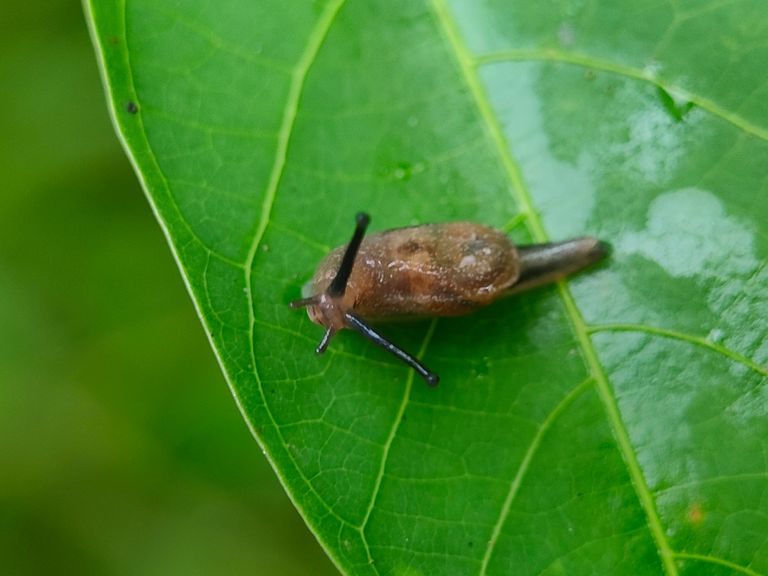
Factors affecting population development: High humidity and dirty environment around the plant. Control: Predator Snail Achatina fulica: Gonaxis sp., Euglandina sp., Lamprophorus sp., and bacteria Aeromonas liquefacicus. Conch large or small can easily be caught at night and destroyed. By removing trash and weeds, snails do not have the opportunity to nest and hide. Adult snails are 10-12 mm long, 14-18 mm in diameter with 5-6 circular grooves, solid, opaque, reddish-brown or yellowish-green in color, sometimes having a reddish-brown stripe around the outside. Snails have a small and slightly protruding shell, measuring 5 cm long, yellowish brown or grayish brown in color. During the day, snails hide in the shade, and are active foraging for food at night. Symptoms of attack: Snails damage all parts of the plant by eating leaves and actively seeking food at night. Source of attack and mode of distribution: Other host plants in the vicinity of crops and shrubs. Factors affecting population development: High humidity and a dirty environment around the crop.



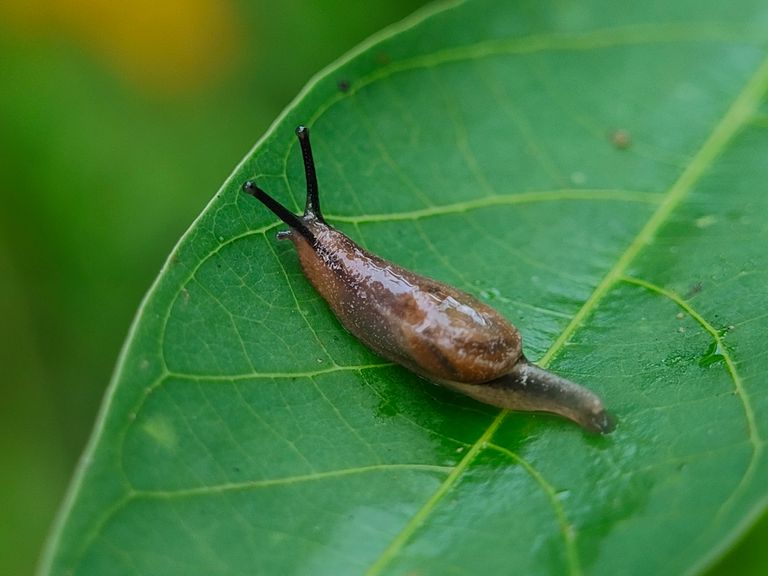
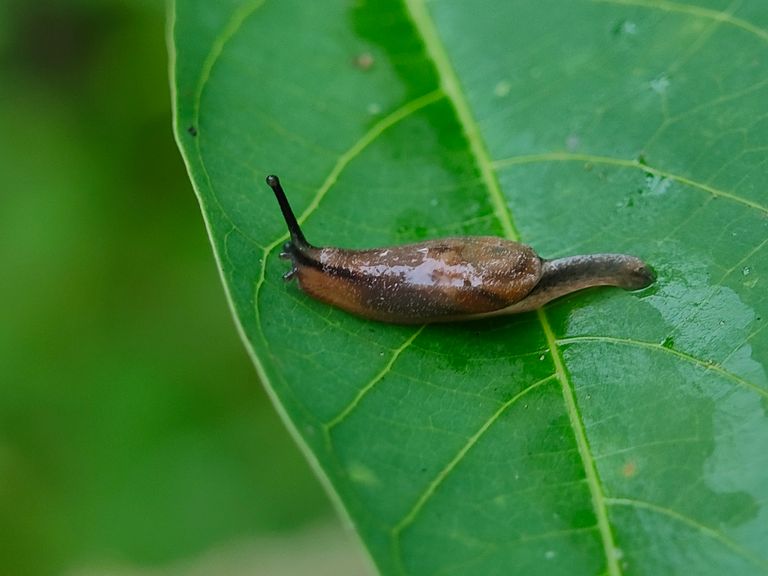

This is all I can say more and less I apologize, hopefully it will be useful for me, and hopefully it will be useful for all readers in general, thank you for visiting my blog, don't forget to follow and vote for my posts. , and one more thing, don't forget to share this post with other friends.
Thank you for visiting my blog, don't forget to follow and vote for me to post, and others don't forget to share this post with other friends.
Greetings to all on Blurtter....
Itu bekecot apa beruang hahhh.